Don’t you just love a good framework?
When somebody else has distilled their hard-won and complex experience into a brilliantly simple equation that you can let loose on your own projects?
Here at the WXO, we certainly do. Which is why we were thrilled to welcome Pigalle Tavakkoli – an experience designer and teacher with over 15 years’ experience in producing cross-disciplinary experiences that bring the arts and sciences together – to share her building blocks for transformation and the jewel in her crown, The Experience Design Triple Diamond.
Since 2012, Tavakkoli has co-developed and taught the UK’s first short course in Experience Design at Central Saint Martins University in London. She has also now founded the online School of Experience Design.
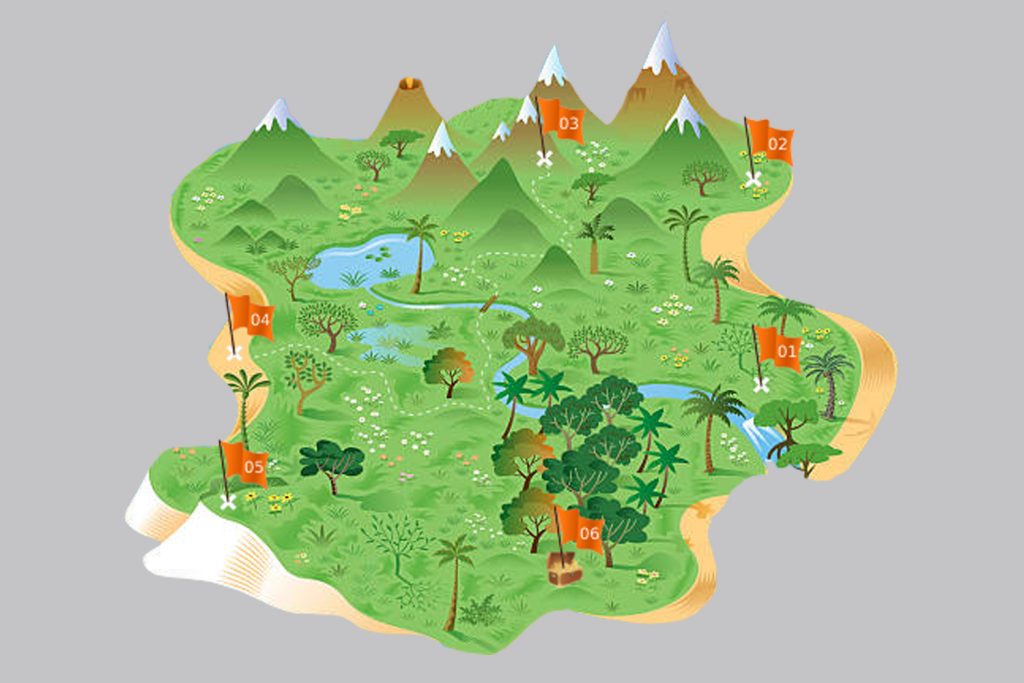
In her quest to define the meaning of experience design and map a clear process to deliver transformation, Tavakkoli has travelled to lands far and wide.
Now, she’s opening her treasure chest of insights so you can explore this hidden island together – gaining unexpected insights, gathering new frameworks, and deepening your understanding of the transformative power of designing experiences along the way.
Prepare to cross the threshold of your known lands on a Hero’s and Heroine’s Journey and set sail to a mysterious island called Experience Design. Unlock the treasure chests she has buried, containing the Experience Design Building Blocks. And finally unearth the coveted Triple Diamond…
Your Call To Adventure Awaits
The island of Experience Design is shrouded in myths and legends that have been carried on the wind, explored by a few brave pioneers like Joe Pine and James Gilmour.
However, there is much confusion around this island – from how to spell it, to what it actually is, and how to do it. There is therefore much left for you to discover.
Tavakkoli heeded this call to adventure when she set off on her own quest in search of a definition and a way to map the process. She journeyed from London to Lithuania, Marrakech to Melbourne, on a mission to uncover transformative experiences.
Along the way, she drew on her original background in studying theatre and working on West End shows. This provided her with techniques to remove the stage and place the audience as the lead protagonists. She then worked in fashion design and marketing for designers such as Alexander McQueen.
Finally, she had a lightbulb moment when she created an immersive event for the V&A Theatre Museum, London, realising she could combine her backgrounds to create transformative experiences. She went on to work with scientists from institutions such as the Science Museum and Wellcome Collection to create new, interdisciplinary formats that brought the arts and sciences together. Working with leading scientists also helped her to underpin her theories of experience design.
Now, Tavakkoli is stepping into the role of mentor and passing this call of adventure onto you. As the world faces great upheaval and uncertainty in the form of climate change, population growth, economic instability and culture shifts, the need to empower people with meaningful solutions to these problems is growing. It’s time to leave your known worlds, set out into the unknown in search of answers, and uncover the first of Tavakkoli’s Experience Design Building Blocks.
Building Block 1: The Experience Change Equation
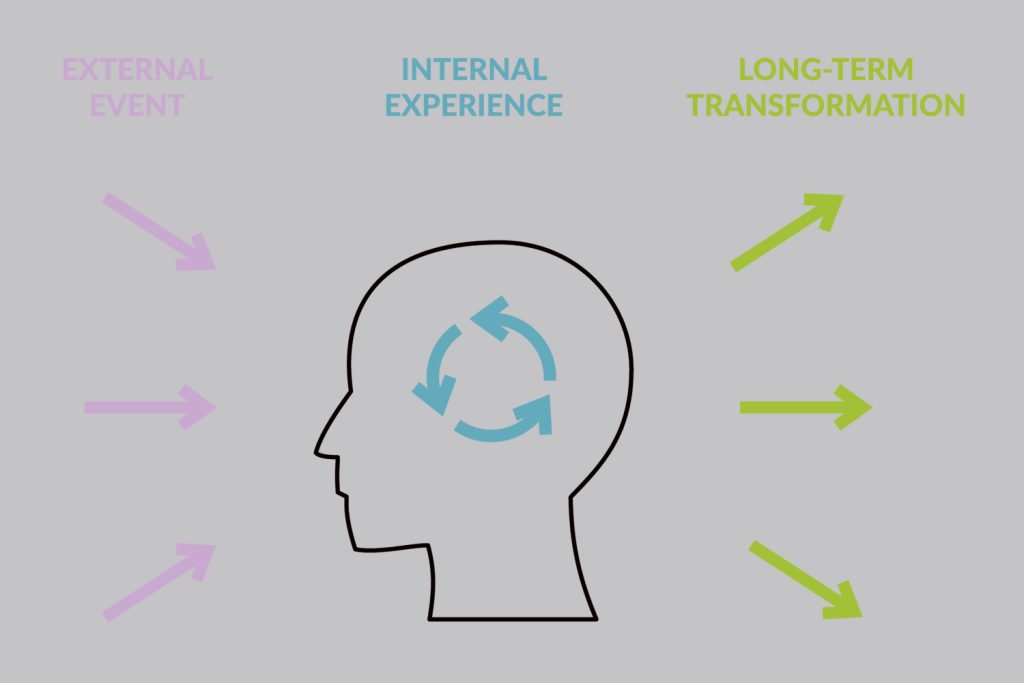
You’ll already know that transformation is the ultimate outcome for experience designers. But how do we actually define it? Tavakkoli distinguishes between events, experiences and transformations as follows:
An event is when external elements comes together to provide stimulation or entertainment for the audience. The audience passes through it, and it takes place over a short amount of time.
An event become an experience when internal changes happen within the audience. This sparks emotional connections, which then form memories, meaning that even after the experience the audience feels inspired to start transforming.
A transformation takes place when the audience transforms from one state to another, shifting from being passive consumers to becoming the active creators of their own lives.
These internal changes take three forms:
- Emotions: the way that they feel
- Perspectives: the way that they think
- Actions: the way that they behave
This last step of behavioural change is the hardest to achieve – but if we follow the change equation, we have a greater chance of realising it.
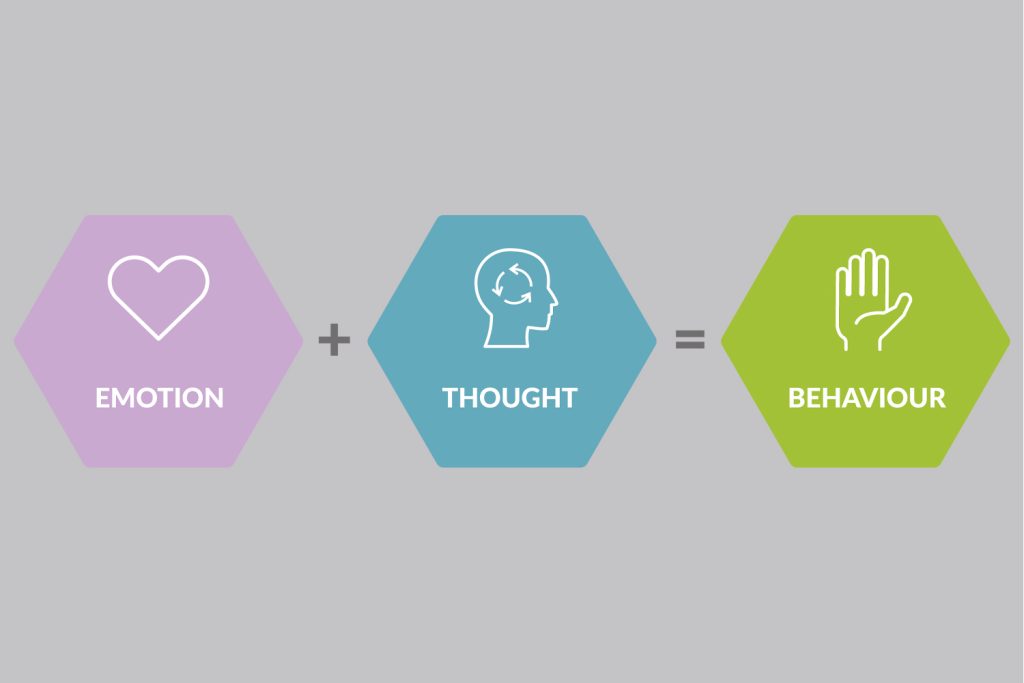
Start with changing emotions – because when you do, your audience’s internal mental barriers begin to come down and their mindsets start to open up. Then you can introduce elements midway in the experience to shift their thoughts and perspectives.
When it comes to designing for emotion, you can start by thinking about the emotions people will be having when they arrive and are crossing the threshold. You can then think about the emotions you want the audience to leave with. These start and end points form the anchors for you to design their emotional journey through the experience.
(For more on how to seed anticipation and gradually help audiences to cross the threshold of an experience, see Campfire 12: Taking The Stairs Versus Crossing The Threshold.)
Next, start introducing elements that shift their thinking.
These two steps lead to a change in behaviour. The amount of change, and how long-lasting it will be, depends on the quality and depth of emotions and thoughts that they went through.
This “feel, think, do” format is a twist on the usual “think, feel, do” technique you might be more familiar with. Tavakkoli flipped emotions to be the first step due to the fact that humans are 95% or more driven by theirr subconscious areas of the brain rather than their conscious, rational brain – so she recommends that this is where we should direct our attention.
You could also argue that this synthesising of emotional and rational data happens simultaneously in a process known as interoception, where the insula cortex combines the thinking brain with senses and emotions and makes a consensus.
Perhaps we could also go beyond these three stages. In his book Experiential Marketing: How to Get Customers to Sense, Feel, Think, Act, Relate, Bernd Schmitt looks at the relational aspects of an experience including sense memory.
“Emotional valence is assigned to a sense – from a neuroscience standpoint, we’re forming a sense memory of a space every moment. It could be fun to include these relational aspects of an experience as well as our perceptions.”
Doug Steel
Building Block 2: The Principle Pillars Of Experience Design
Tavakkoli believes that experience design has two main principles.
Human-centred. It considers the audience from the start of the design process, and looks beyond external demographics towards internal psychographics.
As Carl R Rogers says in A Way Of Being, all humans strive for self-actualisation. When people carry out internal reflections, this empowers them with the understanding of themselves.
In fact, we can say that experience design is not only human-centred, but humanistic.
“Humanism sees life as a gradual process of inner change, from ignorance to spiritual enlightenment through experiences. The highest purpose in life is the full development of your knowledge through a wide array of intellectual, emotional and physical experiences.”
Yuval Noah Harari
Purpose-driven. It looks beyond the audience’s immediate needs to really empathise and identify their deeper desires and internal motivations, empowering them to fulfil their potential and meet their purpose.
“Life is not primarily a quest for pleasure… or a quest for power… but a quest for meaning. The greatest task of any person is to find meaning in his or her own life.”
Viktor E Frankl
When we combine these principle pillars, we can say that experience design is a human-centred and purpose-driven approach which creates the conditions for a way of being, which then leads to a way of living.
“Experience Design is not just human-centred, it is also a humanistic approach. The main focus is not on event, service or product development, the main focus is on human development. With this approach, the events, products and services become the tools and conduit for self-actualisation to take place.”
Pigalle Tavakkoli
Building Block 3: The Phases Of Experience Design
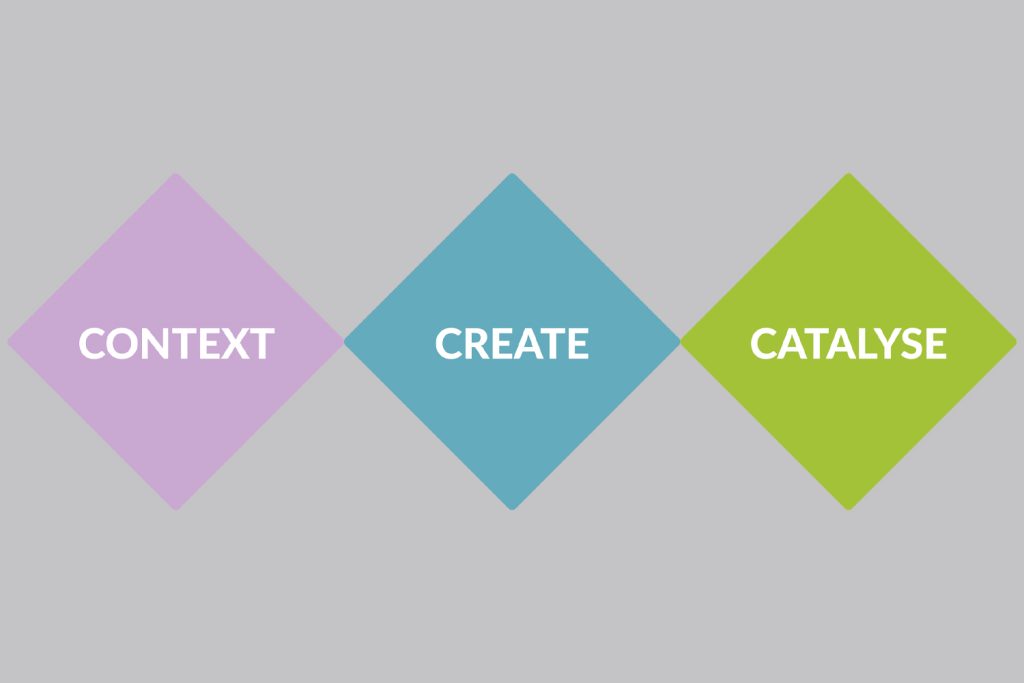
Tavakkoli believes there are three phases to designing an experience.
- Context. Who is the design aimed at? What is the external context? What are the audience’s internal motivations?
- Create. What is the story? Which narrative structures will you use? What will the design look like?
- Catalyse. How will the audience engage? What can you learn from the metrics around their participation? And how can you reflect, share and embed these in the wider team or organisation?
This third activation phase forms a continuous learning loop for progression, as you take your learnings and bring them into the Context phase of your next project.
Building Block 4: Connections
An experience is like a water droplet that falls on the surface of water. It breaks through a person’s outer surface to connect with their inner self.
When a person gains understanding of who they are, they are able to have more empathy and understanding of others. Their understanding sends ripples of influence to overlap and connect with other people in their community.
Eventually, this spreads beyond their immediate community and connects them to wider society.
“Any experience carried out deeply to its ultimate leads you beyond yourself into a larger relation to the experience of others.”
Anaïs Nin
Experiences help to break down boundaries, so we can transcend our own individual parts, and become interconnected and united as a greater whole.
Assembling The Building Blocks
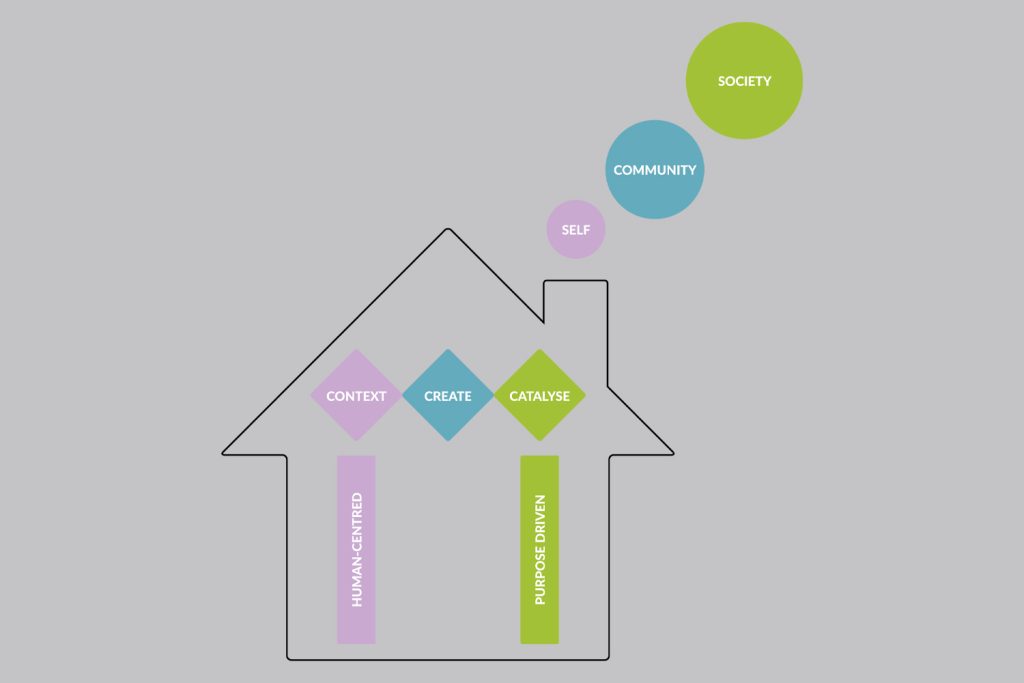
When all the Building Blocks are assembled, you have a complete structure to support the design of your experience.
The pillars are the foundation that support the house.
The phases are the material you cover it with to form the roof.
And the connections are like a chimney, with their ripples of influence being released and diffusing out into the wider world.
The Experience Design Triple Diamond
The jewel in Tavakkoli’s crown is inspired by the Double Diamond framework, developed by Béla H. Bánáthy in their 1996 book Designing Social Systems In A Changing World. This was later developed by the British Design Council as a useful tool in the field of design thinking, and again into the Systemic Design Framework to better serve the complex times we’re living in.
Tavakkoli has built on and extended this framework as a step-by-step process for experience design.
Within Context lies Discovery and understanding your audience, then Defining the client’s aims, and the impact you want to bring about.
Within Create lies Designing the story and narrative structure, and Developing this through prototyping and refining the design.
Within Catalyse lies Delivery and tracking your audience to find out how they engaged, and Assessing if your design achieved its aims.
Each diamond then opens up further, to reveal detailed layers underneath with practical methods and a toolkit on how to achieve each phase.
“I’m now laying the quest in your hands. You all have unique backgrounds and experiences that have shaped you. I encourage you to develop your own personal approach and way of working, because all of our contributions will help transform the world into a colorful, nuanced and meaningful place to live in.”
Pigalle Tavakkoli
The WXO Take-Out
Having a brilliantly simple framework such as Tavakkoli’s Triple Diamond – and being able to deliver it as a story – is a priceless tool for engaging clients and collaborators with the value of the experience design process.
“So many times I’ve stepped into boardrooms and given these presentations to lawyers or engineers, and when you do it in a storytelling way it’s so different for them.”
Lou Murray
And when we accept the call to adventure, move away from our known lands and apply what we discover to our own experiences, we’re opening up opportunities to trigger transformation in not only individuals, but also in our communities and society at large.
So next time you design an experience, ask yourself:
- What emotions am I designing my experience for in order to trigger internal transformation?
- How can I use the Experience Change Equation to help those who come to my experience transcend themselves and impact their community and society?
- How do the phases explored within the Experience Design Triple Diamond apply to my own project? Is there anything I’m missing?
Want to be part of the most inspiring experience conversations in the world? Apply to become a member of the World Experience Organization here – to come to Campfires, become a better experience designer, and be listed in the WXO Black Book.






